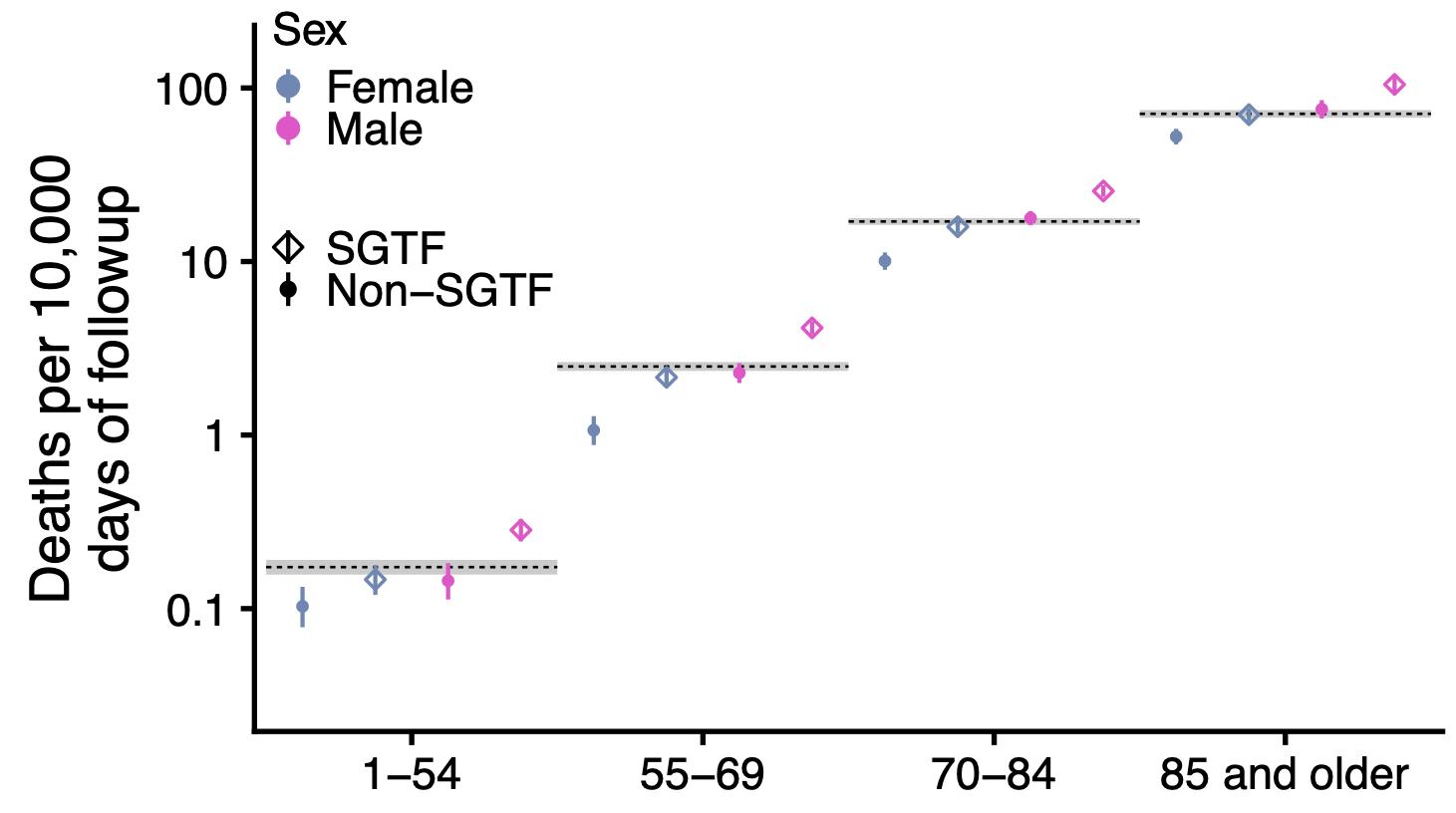Increased mortality in community-tested cases of SARS-CoV-2 lineage B.1.1.7
This paper has now been published in Nature.
SARS-CoV-2 lineage B.1.1.7, a variant first detected in the United Kingdom in September 2020, has spread to multiple countries worldwide. Several studies have established that B.1.1.7 is more transmissible than preexisting variants, but have not identified whether it leads to any change in disease severity. We analyse a dataset linking 2,245,263 positive SARS-CoV-2 community tests and 17,452 COVID-19 deaths in England from 1 September 2020 to 14 February 2021. For 1,146,534 (51%) of these tests, the presence or absence of B.1.1.7 can be identified because of mutations in this lineage preventing PCR amplification of the spike gene target (S gene target failure, SGTF). Based on 4,945 deaths with known SGTF status, we estimate that the hazard of death associated with SGTF is 55% (95% CI 39–72%) higher after adjustment for age, sex, ethnicity, deprivation, care home residence, local authority of residence and test date. This corresponds to the absolute risk of death for a 55–69-year-old male increasing from 0.6% to 0.9% (95% CI 0.8–1.0%) within 28 days after a positive test in the community. Correcting for misclassification of SGTF and missingness in SGTF status, we estimate a 61% (42–82%) higher hazard of death associated with B.1.1.7. Our analysis suggests that B.1.1.7 is not only more transmissible than preexisting SARS-CoV-2 variants, but may also cause more severe illness.
 Increase in mortality associated with SARS-CoV-2 lineage B.1.1.7. Crude death rates (point estimates and 95% CIs) among SGTF versus non-SGTF cases (in the subset with SGTF measured, n = 1,146,534) for deaths within 28 days of positive test stratified by broad age groups and sex. Horizontal bars show the overall crude death rates (95% CIs) by age group irrespective of SGTF status.
Increase in mortality associated with SARS-CoV-2 lineage B.1.1.7. Crude death rates (point estimates and 95% CIs) among SGTF versus non-SGTF cases (in the subset with SGTF measured, n = 1,146,534) for deaths within 28 days of positive test stratified by broad age groups and sex. Horizontal bars show the overall crude death rates (95% CIs) by age group irrespective of SGTF status.